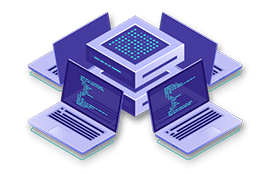Developers of large data-intensive software often notice an interesting — though not surprising — phenomenon: When usage of an application jumps dramatically, components that have operated for months without trouble suddenly develop previously undetected errors. For example, the application may have been installed on a different OS-hardware-DBMS-networking platform, or newly added customers may have account records with an oddball combination of values that have not occurred before. Some of these rare combinations trigger failures that have escaped previous testing and extensive use. Such failures are known as interaction failures, because they are only exposed when two or more input values interact to cause the program to reach an incorrect result.
Combinatorial testing can help detect problems like this early in the testing life cycle. The key insight underlying this method is that not every parameter contributes to every failure and most failures are triggered by a single parameter value or interactions between a relatively small number of parameters. To detect interaction failures, software developers often use “pairwise testing”, in which all possible pairs of parameter values are covered by at least one test. Its effectiveness is based on the observation that software failures often involve interactions between parameters. For example, a router may be observed to fail only for a particular protocol when packet volume exceeds a certain rate, a 2-way interaction between protocol type and packet rate. Figure 1 illustrates how such a 2-way interaction may happen in code. Note that the failure will only be triggered when both pressure 300 are true.

But what if some failure is triggered only by a very unusual combination of 3, 4, or more sensor values? It is very unlikely that pairwise tests would detect this unusual case; we would need to test 3-way and 4-way combinations of values. But is testing all 4-way combinations enough to detect all errors? What degree of interaction occurs in real failures in real systems? Surprisingly, this question had not been studied when NIST began investigating interaction failures in 1999. Results showed that across a variety of domains, all failures could be triggered by a maximum of 4-way to 6-way interactions. As shown in Figure 2, the detection rate (y axis) increased rapidly with interaction strength (the interaction level t in t-way combinations is often referred to as strength). Studies by other researchers have been consistent with these results.


These results are interesting because they suggest that, while pairwise testing is not sufficient, the degree of interaction involved in failures is relatively low. Testing all 4-way to 6-way combinations may therefore provide reasonably high assurance. As with most issues in software, however, the situation is not that simple. Most parameters are continuous variables which have possible values in a very large range (+/- 232 or more). These values must be discretized to a few distinct values. In addition, we need to determine the correct result that should be expected from the system under test for each set of test inputs. But these challenges are common to all types of software testing, and a variety of good techniques have been developed for dealing with them.

A test suite to cover all 2-way, 3-way, etc. combinations is known as a covering array. An example is given in Figure 3, which shows a 3-way covering array for 10 variables with two values each. The interesting property of this array is that any three columns contain all eight possible values for three binary variables. For example, taking columns F, G, and H, we can see that all eight possible 3-way combinations (s000, 001, 010, 011, 100, 101, 110, 111) occur somewhere in the three columns together. In fact, any combination of three columns chosen in any order will also contain all eight possible values. Collectively, therefore, this set of tests will exercise all 3-way combinations of input values in only 13 tests, as compared with 1,024 for exhaustive coverage.
How can Combinatorial Methods be Used in Testing?
There are basically two approaches to combinatorial testing – use combinations of configuration parameter values, or combinations of input parameter values. In the first case, we select combinations of values of configurable parameters. For example, telecommunications software may be configured to work with different types of call (local, long distance, international), billing (caller, phone card, 800), access (ISDN, VOIP, PBX), and server for billing (Windows Server, Linux/MySQL, Oracle).
In the second approach, we select combinations of input data values, which then become part of complete test cases, creating a test suite for the application. For example, a word processing application may allow the user to select 10 ways to modify some highlighted text: subscript, superscript, underline, bold, italic, strikethrough, emboss, shadow, small caps, or all caps. Thorough testing requires that the font-processing function work correctly for all valid combinations of these input settings. But with 10 binary inputs, there are 210 = 1,024 possible combinations. But the empirical analysis reported above shows that testing all 3-way combinations may detect 90% or more of bugs. For a word processing application, testing that detects better than 90% of bugs may be a cost-effective choice. The covering array shown in Figure 3 could be used for this testing.
Conclusions
Using combinatorial methods for either configuration or input parameter testing can help make testing more effective at an overall lower cost. Although these methods do not apply to all applications, they can be a valuable addition to the tester’s toolbox.
Certain commercial products are identified in this document, but such identification does not imply recommendation by the US National Institute of Standards and Technology, nor does it imply that the products identified are necessarily the best available for the purpose.
(This article is condensed from Chapter 2 of Practical Combinatorial Testing, freely downloadable here)


















